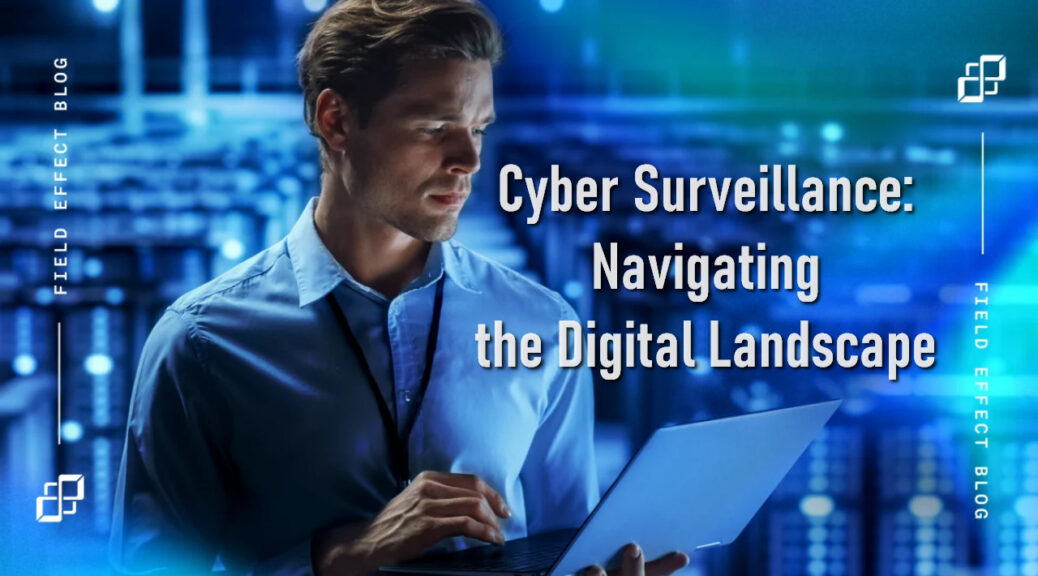
Cyber Surveillance: Navigating the Digital Landscape
In today’s interconnected world, where the internet plays an integral role in our lives, the concept of cyber surveillance has become increasingly relevant. Cyber surveillance refers to the monitoring and collection of digital data to gain insights, identify threats, and maintain security. While it can be a useful tool in protecting individuals and organizations, it also raises concerns about privacy, civil liberties, and the potential for abuse. Navigating the digital landscape requires a careful balance between security and privacy considerations.
The Purpose of Cyber Surveillance

The primary purpose of cyber surveillance is to detect and prevent cyber threats. With the growing sophistication of cyber attacks, surveillance tools, and techniques have become essential for identifying vulnerabilities, monitoring network traffic, and identifying potential intrusions. Cyber surveillance allows organizations to detect and respond to threats in real time, mitigating potential damages and protecting sensitive information. Additionally, a private investigator can help in identifying cybercriminals, gathering evidence, and supporting law enforcement agencies in investigating and prosecuting cybercrimes.
Types of Cyber Surveillance
There are various types of cyber surveillance techniques employed to monitor and gather information in the digital landscape. These include:
Network Monitoring: Network monitoring involves the collection and analysis of network traffic data to identify anomalous activities, intrusions, or potential security breaches.
Data Collection and Analysis: This involves the collection and analysis of digital data, such as emails, chat logs, and browsing history, to gather intelligence and identify patterns or threats.
Video Surveillance: Video surveillance employs cameras and monitoring systems to capture and analyze visual data, allowing for real-time monitoring of physical spaces and identifying potential security risks.
Social Media Monitoring: With the proliferation of social media platforms, monitoring tools are used to track and analyze public posts, comments, and profiles to identify potential security threats or gather intelligence.
Privacy Concerns and Ethical Considerations

While cyber surveillance serves a vital purpose, it raises significant privacy concerns and ethical considerations. The collection and monitoring of personal data can infringe on individuals’ privacy rights, leading to potential abuses. It is crucial to establish clear legal frameworks and guidelines to ensure that surveillance activities are conducted lawfully, transparently, and with appropriate oversight. Striking a balance between security needs and privacy rights is essential to protect an individual’s civil liberties and maintain public trust.
The Role of Encryption

Encryption plays a critical role in navigating the digital landscape amidst cyber surveillance. It involves encoding information in a way that only authorized individuals can access it, safeguarding data from unauthorized interception or surveillance. Strong encryption methods are essential to protect sensitive information, communications, and privacy rights. However, encryption also poses challenges for law enforcement agencies, as it can hinder their ability to investigate and prevent crimes. Striking a balance between encryption and lawful access is a complex issue that requires ongoing discussions and collaboration between technology companies, policymakers, and law enforcement agencies.
Regulation and Oversight
To address the concerns associated with cyber surveillance, appropriate regulation, and oversight are essential. Governments and international bodies need to establish clear legal frameworks that define the scope, limitations, and accountability of surveillance activities. Independent oversight bodies can ensure that surveillance practices comply with legal requirements and respect individuals’ privacy rights. Transparent reporting mechanisms and regular audits can help maintain accountability and build public trust in cyber surveillance initiatives.
Conclusion
Cyber surveillance is a double-edged sword in the digital landscape. While it enables the detection and prevention of cyber threats, it also raises concerns about privacy, civil liberties, and the potential for abuse. Striking a balance between security needs and privacy rights is crucial in navigating the complex digital world. With proper regulation, oversight, and ethical considerations, cyber surveillance can be harnessed to protect individuals, organizations, and society as a whole while preserving fundamental rights and values.